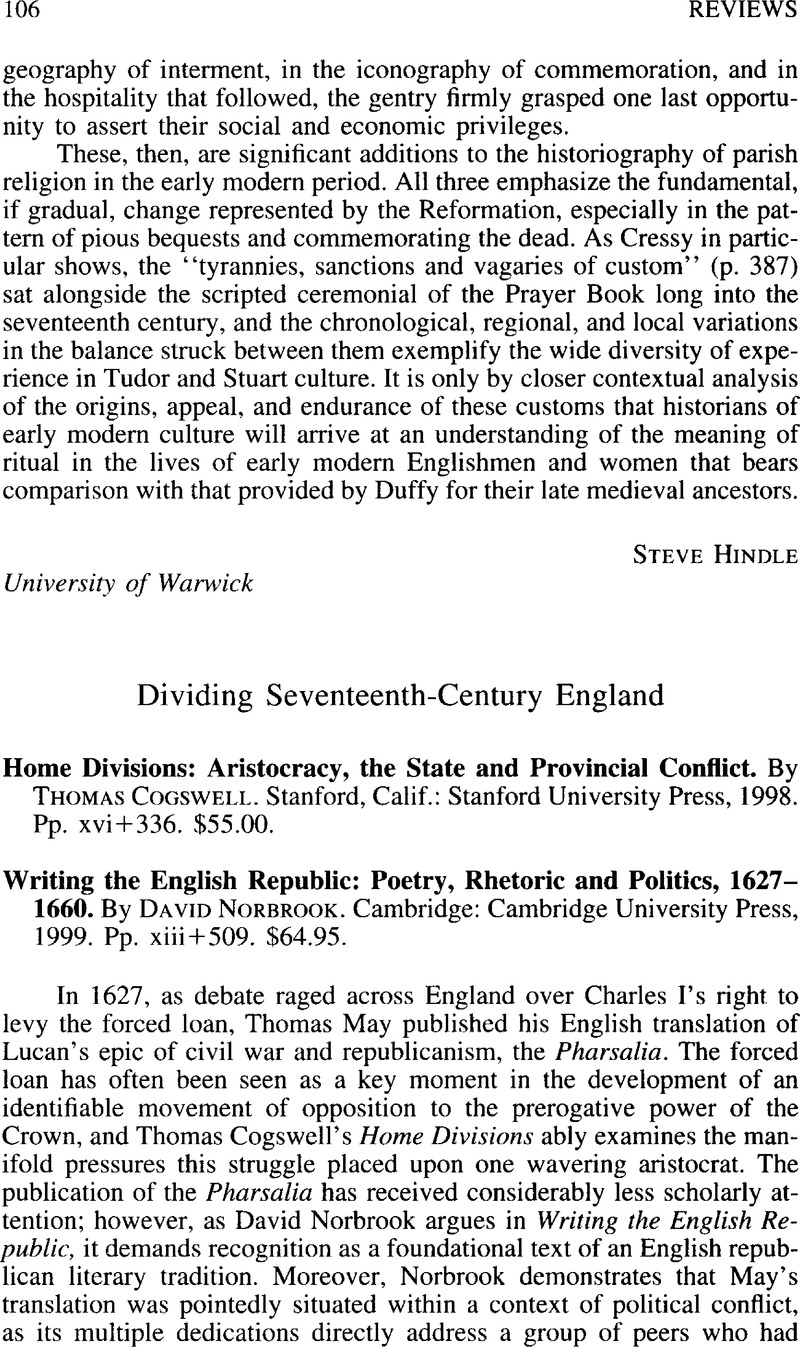No CrossRef data available.
Article contents
Dividing Seventeenth-Century England - Home Divisions: Aristocracy, the State and Provincial Conflict. By Thomas Cogswell. Stanford, Calif.: Stanford University Press, 1998. Pp. xvi + 336. $55.00. - Writing the English Republic: Poetry, Rhetoric and Politics, 1627–1660. By David Norbrook. Cambridge: Cambridge University Press, 1999. Pp. xiii + 509. $64.95.
Review products
Published online by Cambridge University Press: 10 January 2014
Abstract

- Type
- Reviews
- Information
- Journal of British Studies , Volume 39 , Issue 1: Anglo-American Puritanisms , January 2000 , pp. 106 - 114
- Copyright
- Copyright © North American Conference of British Studies 2000
References
1 Bodleian Library, Rawlinson MS Poetry 26, fol. 6v; Bodleian MS Malone 23, p. 119; British Library Additional MS 29492, fol. 56r (the top of this page may have been cropped, thus deleting an article or words preceding these in the poem's title). Another source is more specific about the date of composition, stating that it “was writt 2 monethes before [Buckingham's] death” (Bodleian MS Ashmole 36, 37, fol. 174v). I will quote the version in Bodleian MS Ashmole 36, 37.
2 One variant has “gaines” for “Game,” which reinforces the sense of polarization, with the king and courtiers set against the “publique weale.”
3 Bodleian MS Eng. poet, c.50, fol. 13r.
4 See esp. Smith, Nigel, Literature and Revolution in England, 1640–1660 (New Haven, Conn., and London, 1994)Google Scholar; also Hill, Christopher, The World Turned Upside Down: Radical Ideas during the English Revolution (London, 1972)Google Scholar; Raymond, Joad, The Invention of the English Newspaper: English Newsbooks, 1641–1649 (Oxford, 1996)Google Scholar; and Wiseman, Susan, Drama and Politics in the English Civil War (Cambridge, 1998)CrossRefGoogle Scholar.
5 The Life of a Satyrical Puppy, Called Nim (1657), p. 61Google Scholar; Leonie J. Gibson situates this text in the 1620s, and identifies its oblique reference to Wither (“Formal Satire in the First Half of the Seventeenth Century: 1600–1650” [D.Phil, diss., University of Oxford, 1952], pp. 304, 302Google Scholar).


